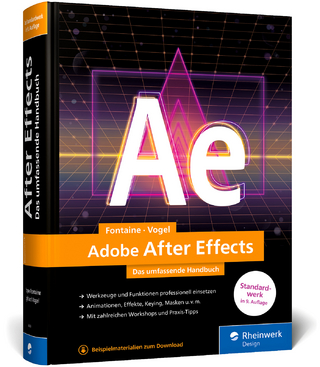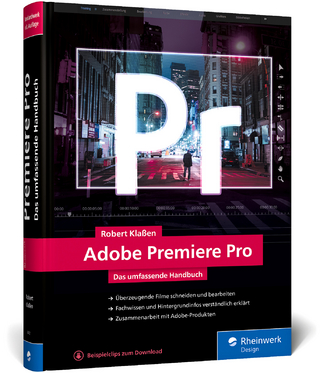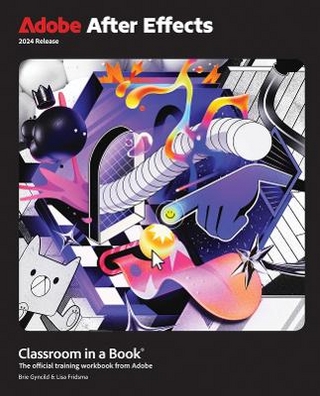
Make: Getting Started with Processing
O'Reilly Media (Verlag)
978-1-4571-8708-7 (ISBN)
Written by the co-founders of the Processing project, Reas and Fry, Getting Started with Processing shows you how easy it is to make software and systems with interactive graphics.
If you're an artist looking to develop interactive graphics programs or a programmer on your way to becoming an artist, this book will take you where you want to go. Updated with new material on graphics manipulation, data, and for the latest version of Processing.
Casey Reas is a professor in the Department of Design Media Arts at UCLA and a graduate of the MIT Media Laboratory. Reas' software has been featured in numerous solo and group exhibitions at museums and galleries in the United States, Europe, and Asia. With Ben Fry, he co-founded Processing in 2001. He is the co-author of "Processing: A Programming Handbook for Visual Designers and Artists" (2007) and "Form+Code in Design, Art, and Architecture" (2010). His work is archived at http: //www.reas.comwww.reas.com.
Ben Fry has a doctorate from the MIT Media Laboratory and was the 2006-2007 Nierenberg Chair of Design for the Carnegie Mellon School of Design. He worked with Casey Reas to develop Processing, which won a Golden Nica from the Prix Ars Electronica in 2005. Ben's work has received a New Media Fellowship from the Rockefeller Foundation, and been shown at the Museum of Modern Art, Ars Electronica, the 2002 Whitney Biennial, and the 2003 Cooper Hewitt Design Triennial.
Chapter 1Hello
Sketching and Prototyping
Flexibility
Giants
Family Tree
Join In
Chapter 2Starting to Code
Your First Program
Show
Save and New
Share
Examples and Reference
Chapter 3Draw
The Display Window
Basic Shapes
Drawing Order
Shape Properties
Drawing Modes
Color
Custom Shapes
Comments
Robot 1: Draw
Chapter 4Variables
First Variables
Making Variables
Processing Variables
A Little Math
Repetition
Robot 2: Variables
Chapter 5Response
Once and Forever
Follow
Click
Location
Type
Map
Robot 3: Response
Chapter 6Translate, Rotate, Scale
Translate
Rotate
Scale
Push and Pop
Robot 4: Translate, Rotate, Scale
Chapter 7Media
Images
Fonts
Shapes
Robot 5: Media
Chapter 8Motion
Frames
Speed and Direction
Tweening
Random
Timers
Circular
Robot 6: Motion
Chapter 9Functions
Function Basics
Make a Function
Return Values
Robot 7: Functions
Chapter 10Objects
Fields and Methods
Define a Class
Create Objects
Tabs
Robot 8: Objects
Chapter 11Arrays
From Variables to Arrays
Make an Array
Repetition and Arrays
Arrays of Objects
Robot 9: Arrays
Chapter 12Data
Data Summary
Tables
JSON
Network Data and APIs
Robot 10: Data
Chapter 13Extend
Sound
Image and PDF Export
Hello, Arduino
Appendix Coding Tips
Functions and Parameters
Color Coding
Comments
Uppercase and Lowercase
Style
Console
One Step at a Time
Appendix Data Types
Appendix Order of Operations
Appendix Variable Scope
| Erscheint lt. Verlag | 20.10.2015 |
|---|---|
| Zusatzinfo | colour illustrations |
| Verlagsort | Sebastopol |
| Sprache | englisch |
| Maße | 143 x 216 mm |
| Gewicht | 310 g |
| Einbandart | kartoniert |
| Themenwelt | Informatik ► Grafik / Design ► Film- / Video-Bearbeitung |
| Mathematik / Informatik ► Informatik ► Theorie / Studium | |
| Mathematik / Informatik ► Informatik ► Web / Internet | |
| Technik | |
| ISBN-10 | 1-4571-8708-6 / 1457187086 |
| ISBN-13 | 978-1-4571-8708-7 / 9781457187087 |
| Zustand | Neuware |
| Haben Sie eine Frage zum Produkt? |
aus dem Bereich


